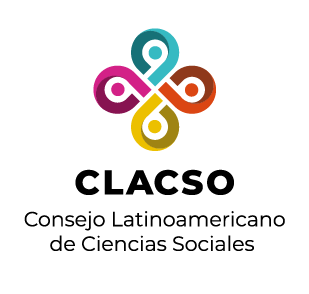Red de Bibliotecas Virtuales de Ciencias Sociales en
América Latina y el Caribe

Por favor, use este identificador para citar o enlazar este ítem:
https://biblioteca-repositorio.clacso.edu.ar/handle/CLACSO/235480| Título : | An Unequal Expansion. Changes in Argentine Consumption Patterns, from the Early 20th Century to the 1940s Una expansión desigual. Los cambios en el consumo argentino, desde principios del siglo XX hasta la década de 1940 |
| Palabras clave : | Consumption;Social History;Argentina in the Twentieth Century;Income Distribution;Regional Divergence;Consumo;Historia Social;Argentina en el siglo XX;Distribución del ingreso;Divergencia regional |
| Editorial : | Facultad de Filosofía y Letras, Universidad de Buenos Aires |
| Descripción : | This article analyzes the evolution of consumption in Argentina from the first decade of the twentieth century to 1940, with a special emphasis on the transformations that occurred in the three periods that covered that space of time: the so-called Belle Époque that unfolded between 1903 and 1913, the fourteen years of administration of the Radical Party between 1916 and 1930 and, finally, the ten years that followed the economic crisis that began in 1929. The objective is to show the changes and continuities concerning the quantities and qualities of the goods demanded by the population. Due to the influence exerted on consumption by the level of income (directly related to real wages) and the levels of nutrition and health, the article not only shows the quantitative and qualitative evolution in the consumption of goods, but also analyses the social and regional inequalities that were directly related to the distribution of family expenditure. To this end, different sources and publications are analyzed, many of which make estimates, along with qualitative information. Este artículo analiza la evolución del consumo en Argentina desde la primera década del siglo XX hasta 1940, con un acento especial en las transformaciones ocurridas en los tres periodos que recorrieron ese espacio de tiempo: la llamada Belle Époque que se desplegó entre 1903 y 1913, los catorce años de administración del Partido Radical entre 1916 y 1930 y, finalmente, los diez años que siguieron a la crisis económica iniciada en 1929. El objetivo es mostrar los cambios y las continuidades en relación con las cantidades y las calidades de los bienes demandados por la población. Por la influencia que ejercen sobre el consumo el nivel de ingresos (directamente relacionado con el salario real) y los grados de nutrición y salud, en el artículo no solo se muestra la evolución cuantitativa y cualitativa en el consumo de bienes, sino que también se analizan las desigualdades sociales y regionales que tuvieron directa relación con la distribución del gasto de las familias. Con ese fin, se analizan distintas fuentes y publicaciones, muchas de las cuales realizan estimaciones, junto con información cualitativa. |
| URI : | https://biblioteca-repositorio.clacso.edu.ar/handle/CLACSO/235480 |
| Otros identificadores : | http://revistascientificas.filo.uba.ar/index.php/boletin/article/view/8019 10.34096/bol.rav.n53.8019 |
| Aparece en las colecciones: | Secretaría de Investigación y Posgrado - SIPFyL/UBA - Cosecha |
Ficheros en este ítem:
No hay ficheros asociados a este ítem.
Los ítems de DSpace están protegidos por copyright, con todos los derechos reservados, a menos que se indique lo contrario.